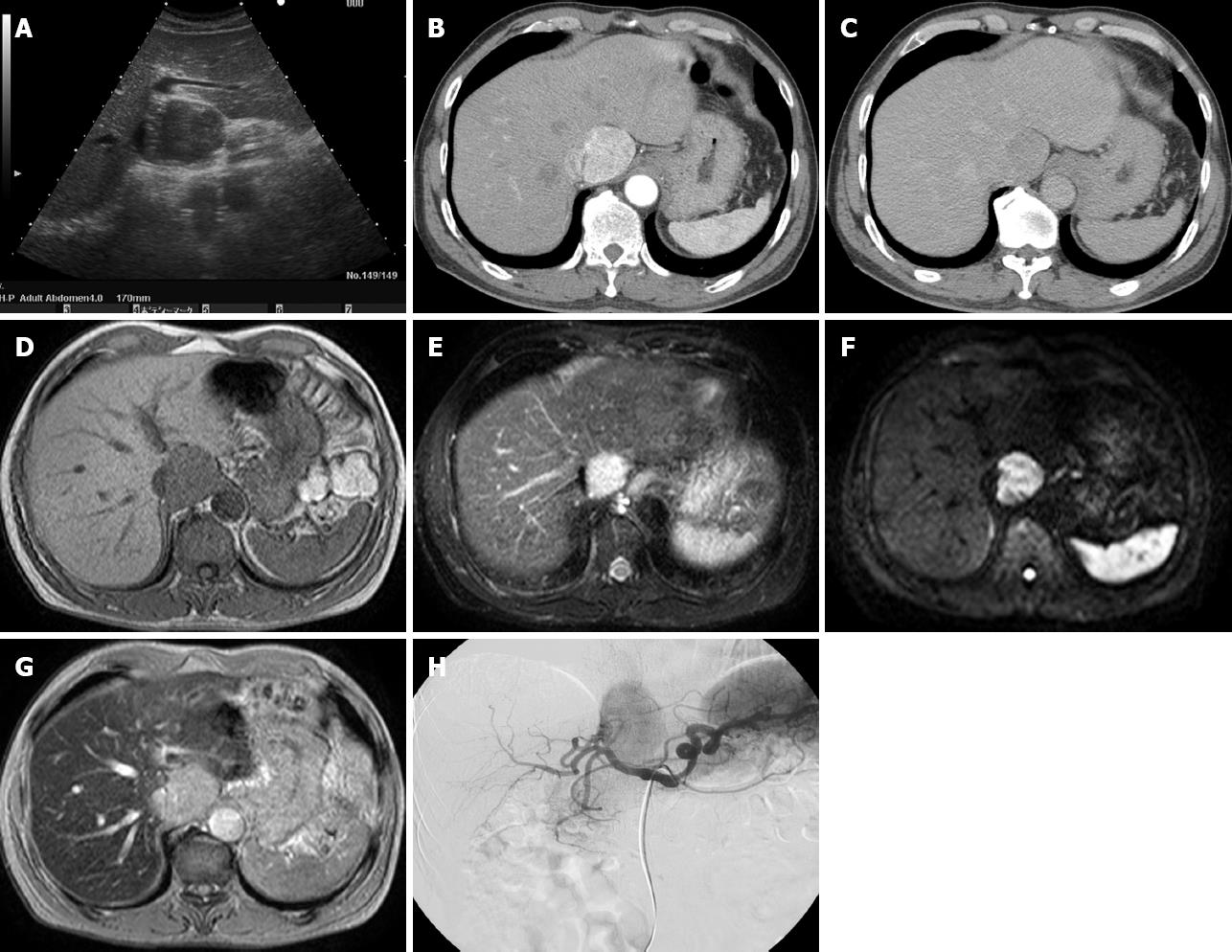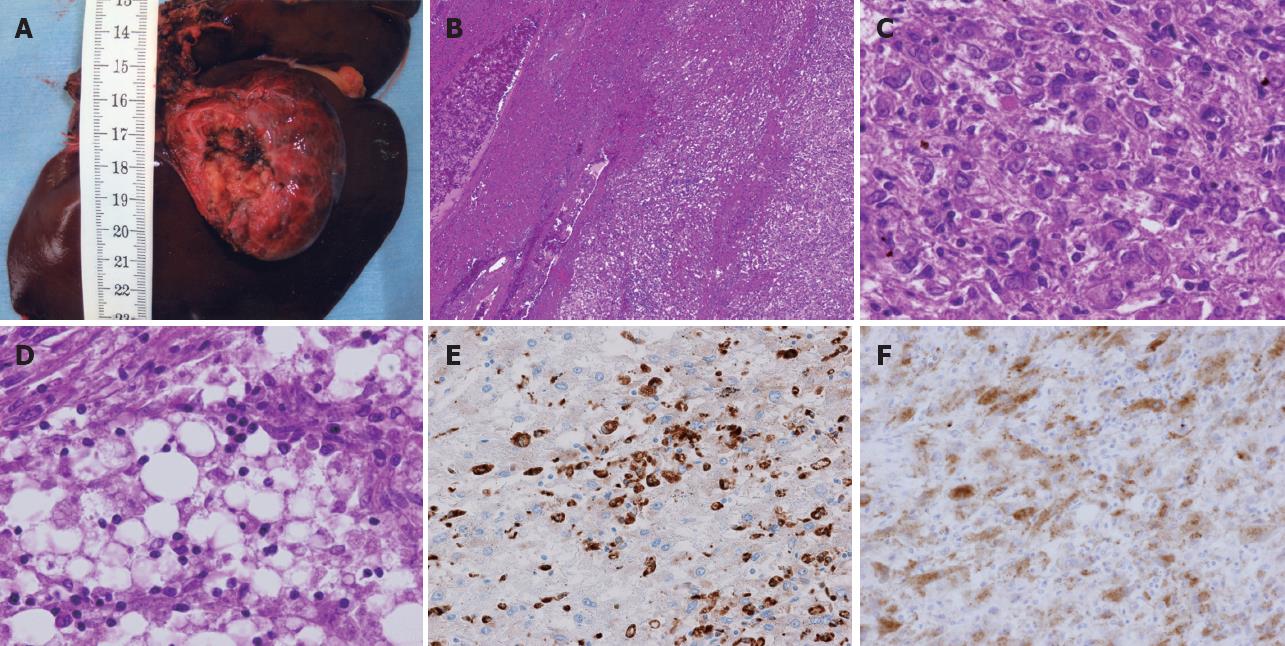Copyright
©2009 The WJG Press and Baishideng.
World J Gastroenterol. Jun 21, 2009; 15(23): 2930-2932
Published online Jun 21, 2009. doi: 10.3748/wjg.15.2930
Published online Jun 21, 2009. doi: 10.3748/wjg.15.2930
Figure 1 Images.
A: The tumor was hypoechoic on ultrasonography, measuring 4.2 cm × 4.0 cm; B-C: Enhanced computed tomography showed a tumor with early-phase hyperattenuation and late-phase hypoattenuation; D-F: Magnetic resonance imaging showed a tumor with hypointensity on T1-weighted, hyperintensity on T2-weighted images and hyperintensity on diffusion weighted images; G: The tumor did not absorb iron on superparamagnetic iron oxide-enhanced MRI; H: On angiography, the tumor was shown as a circumscribed hypervascular mass.
Figure 2 HAML.
A: The tumor occupied a large area of the caudate lobe; B-D: The histological features of the tumor showed that it was mainly composed of smooth muscle cells (B: HE stain, × 4; C: HE stain, × 40) and a small number of adipose cells (D: HE stain, × 40); E, F: Immunohistochemically, the tumor was positive for CD68 (E: CD68, × 20), and HMB-45 (F: HMB-45, × 100).
- Citation: Takahara M, Miyake Y, Matsumoto K, Kawai D, Kaji E, Toyokawa T, Nakatsu M, Ando M, Hirohata M. A case of hepatic angiomyolipoma difficult to distinguish from hepatocellular carcinoma. World J Gastroenterol 2009; 15(23): 2930-2932
- URL: https://www.wjgnet.com/1007-9327/full/v15/i23/2930.htm
- DOI: https://dx.doi.org/10.3748/wjg.15.2930














